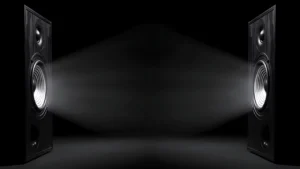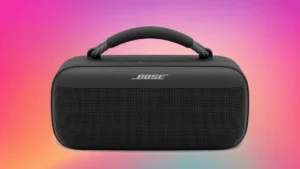To tune a subwoofer box to 30Hz, adjust the port length and area to achieve a resonant frequency of 30Hz. This process involves calculating the correct port dimensions based on the box volume and desired tuning frequency. Proper tuning enhances bass response, increases efficiency, and improves overall sound quality in the target frequency range.
Subwoofer box tuning is a critical aspect of audio system design that can significantly impact bass performance. By tuning a subwoofer box to a specific frequency, such as 30Hz, you can optimize the system’s low-frequency output and achieve a more balanced sound. This article will explore the concept of ported box tuning, its benefits, and provide a step-by-step guide to tuning a subwoofer box to 30Hz.
In This Article:
Understanding Ported Box Tuning
The Basic Concept
Ported box tuning involves designing an enclosure with a port or vent that allows air to move in and out of the box. This design creates a resonant system that enhances bass output at specific frequencies. The port acts as a Helmholtz resonator, working in conjunction with the subwoofer driver to produce additional bass energy.
The Role of Tuning Frequency
The tuning frequency is the point at which the port resonates, reinforcing the subwoofer’s output. When a box is tuned to 30Hz, it means the port is designed to resonate at this frequency, providing maximum output and efficiency in this range. This tuning can extend the subwoofer’s low-frequency response and increase its overall output capability.
Factors Influencing Tuning
Several factors affect the tuning of a ported subwoofer box:
- Box Volume
- Port dimensions (length and cross-sectional area)
- Driver parameters (Thiele-Small parameters)
- Desired tuning frequency
These factors are interconnected, and changing one will impact the others. Achieving the desired tuning frequency requires careful consideration and calculation of these elements.
Types of Subwoofer Boxes
- Sealed boxes: Simplest design, offering tight and accurate bass response
- Ported boxes: Provide increased efficiency and output at the tuning frequency
- Bandpass boxes: Combine sealed and ported sections for specific frequency ranges
- Horn-loaded boxes: Use horn principles to increase efficiency and output
Each type has advantages and disadvantages, with ported boxes being popular for extending low-frequency response and increasing efficiency.
Benefits of Properly Tuned Subwoofer Box
Increased Output at Tuned Frequency
A properly tuned ported box can significantly increase the subwoofer’s output at and around the tuning frequency. This boost in output allows the system to produce deeper bass with less power input, resulting in improved efficiency and potentially higher volume levels.
Flat Frequency Response
When tuned correctly, a ported box can help achieve a flatter frequency response in the subwoofer’s operating range. This flat response translates to a balanced and accurate bass reproduction, without excessive peaks or dips in the frequency spectrum.
Decoupling the Subwoofer
Tuning a subwoofer box to a specific frequency, such as 30Hz, can help decouple the subwoofer from the main speakers. This decoupling allows for better integration between the subwoofer and the rest of the audio system, resulting in a smoother overall frequency response and improved sound quality.
Steps to Tune a Subwoofer Box to 30Hz
Adjusting the Resonant Frequency
- Determine the optimal box volume: Use subwoofer modeling software or manufacturer recommendations to find the ideal box volume for your specific driver.
- Calculate the required port area: The port area depends on the box volume, driver parameters, and desired tuning frequency. Use online calculators or subwoofer design software to determine the correct port area for a 30Hz tuning.
- Determine the port length: Once you have the port area, calculate the required port length to achieve a 30Hz tuning. This calculation considers the box volume, port area, and desired tuning frequency.
- Implement the port design: Construct the port according to the calculated dimensions. Ensure the port is smooth and free from obstructions to minimize turbulence and port noise.
Choosing the Right Port Size
- Consider port velocity: Larger port areas reduce port velocity, minimizing port noise and distortion. Aim for a port velocity below 17 m/s at maximum excursion.
- Account for port length limitations: Long ports may not fit within the box dimensions. In such cases, consider using multiple smaller ports or a slot port to achieve the required area and length.
- Use flared ports: Flared port ends can reduce port noise and improve overall performance by minimizing turbulence at the port openings.
Common Mistakes to Avoid
- Ignoring driver parameters: Each subwoofer driver has specific parameters that affect its performance in a ported box. Use the correct parameters for accurate tuning calculations.
- Overlooking box losses: Internal box losses can affect the actual tuning frequency. Account for these losses in your calculations or use software that considers them.
- Neglecting port area: Insufficient port area can lead to port noise, compression, and reduced performance. Ensure the port area is adequate for the intended power handling and output levels.
- Failing to brace the box: Proper box bracing is essential to prevent panel resonances and maintain the intended tuning frequency.
- Disregarding group delay: Ported boxes introduce group delay, which can affect sound quality. Consider this factor when choosing a tuning frequency and box design.
Frequently Asked Questions
What is a Ported Box and How Does It Affect Bass Performance?
A ported box includes a vent or port that enhances low-frequency output by allowing air to move in and out. This design increases efficiency and extends the bass response compared to a sealed box.
How Can I Determine the Optimal Tuning Frequency?
Optimal tuning frequency depends on the type of music you listen to and the subwoofer’s characteristics. For deep bass, 30Hz is ideal, but for general music, a higher frequency might be preferable.
Is Ported Box Tuning Suitable for All Types of Music?
Ported boxes are versatile and suitable for various music genres, especially those with deep bass. However, they might not be ideal for genres requiring precise and tight bass, like classical or jazz, where a sealed box might be better.




